This week, we seek the science of supercomputers! We find out how they work, and how they can answer some of the biggest questions in science. We also hear about the World Community Grid, which offers scientists computer time donated by volunteers worldwide. In the news we hear how computer aided design can help breast restoration, why special stem cells with just one set of chromosomes can aid geneticists, and how Earth's precious gold may have come from outer space. Plus, we explore the workings of the humble calculator in Question of the Week!
In this episode
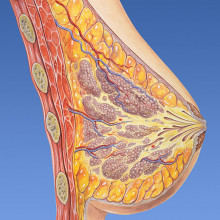
01:25 - Using CAD to reconstruct breast tissue
Using CAD to reconstruct breast tissue
This week, an international team of researchers reported how they have used computer-aided design (or CAD) to build a precise mould that can aid breast reconstruction in cancer patients.
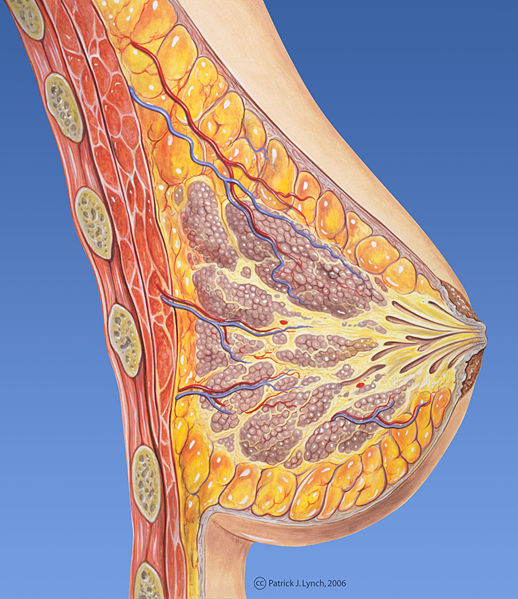 Publishing in the journal Biofabrication, the team took laser scans of healthy breasts and then used CAD software to produce a tailor-made scaffold in silicon. So far this model has only been used by surgeons as a visual guide for reconstruction operations. But the researchers hope that, very soon, this 3D scaffold can be used in combination with tissue engineering.
Publishing in the journal Biofabrication, the team took laser scans of healthy breasts and then used CAD software to produce a tailor-made scaffold in silicon. So far this model has only been used by surgeons as a visual guide for reconstruction operations. But the researchers hope that, very soon, this 3D scaffold can be used in combination with tissue engineering.
Lead author, Professor Dietmar Hutmacher from the Queensland University of Technology, hopes to use this CAD model as a scaffold for the patient's own cells to grow through, meaning that a purpose-grown implant can be placed back into the patient. The end result would be a new breast, made of the patient's own tissue that is perfectly symmetrical to the original.
The study also examined how satisfied the patients were following the operations where surgeons used this 3D model solely as a visual guide. The patients did indeed report a higher degree of satisfaction with the end result than those patients whose surgeons used more traditional methods - i.e. pen and paper. So if tissue engineering takes off, this technology could lessen the impact of mastectomy and can be extended to other applications where tissue needs to be replaced with accuracy.
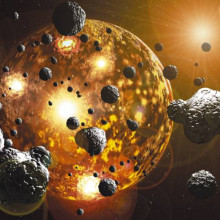
03:11 - How Earth got its gold
How Earth got its gold
Most of the bling with which we bedeck ourselves arrived on Earth aboard 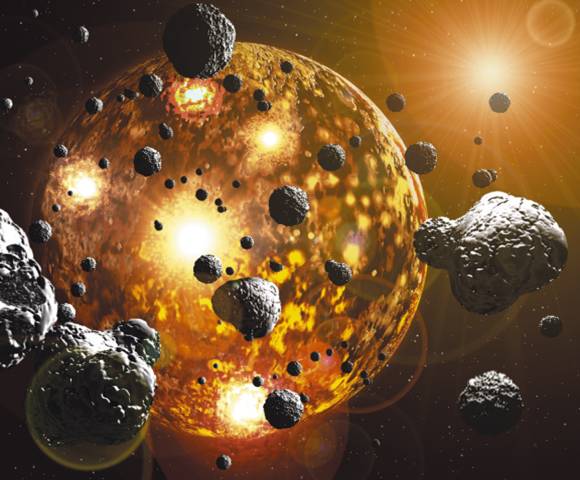 meteorites, recent research has revealed.
meteorites, recent research has revealed.
Our planet's early existence 4.5 billion years ago was a tempestuous one. Frequent massive collisions occurred between the proto-Earth and Moon- and Mars-sized objects that were accreting alongside our world from the disk of dust that spawned the solar system.
The energy of these impacts caused the Earth literally to melt. Inside the resulting giant molten ball, the heavy elements, like iron, sank towards the centre where they would later form what is now the planet's core. The lighter silicates then floated to the top like a cappuccino froth.
But therein lies the wrinkle, because heavy elements like gold and platinum are what are known as siderophiles. They readily combine with iron and therefore should have been pulled down into the core when the iron sank to the centre when the Earth was molten. Instead, these precious metals are actually about 1% more abundant in the Earth's outer layers than they ought to be.
One theory is that, at the very high pressures like those encountered within the planet's interior, the iron somehow releases its grip on the precious metals and they are squeezed out towards the surface. But whilst plausible, this explanation works for only certain elements so cannot be the whole story.
Now, by locating a geological needle in a haystack, scientists at the University of Bristol have found evidence to support a more elegant solution - that the Earth's gold-robbed surface was re-charged with the metal by a later, intense meteor shower after the planet had cooled.
Matthias Willbold and his colleagues, who have published the findings in Nature, reasoned that, when the Earth was molten, the element tungsten would have moved into the iron core, alongside the gold, leaving the planet's mantle relatively depleted in tungsten and enriched for another silicate-preferring element called hafnium-182. But hafnium-182 decays radioactively into tungsten-182. Therefore, the Earth's surface should have a relatively higher level of tungsten-182 than any meteorites that arrive later. So if rocks could be found from the early Earth that bear the predicted level of tungsten-182, this would support the hypothesis that the Earth was largely later re-surfaced by a batch of big meteorites, which would also have contained gold and other precious metals.
Incredibly, the team were able to locate such a set of samples. Rocks dating back 3.8 billion years, from Isua in Greenland, were a direct isotopic match.
"This strongly supports the depositing of a 'late veneer' of material added to the Earth's surface during a 500 million year phase called 'the late heavy bombardment'," says Willbold. "Some very large impactors struck the planet and re-coated the surface..but luckily in the case of these rocks in Greenland, not everywhere..."
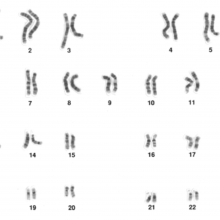
05:18 - Special Stem Cells With Single Sets of Chromosomes
Special Stem Cells With Single Sets of Chromosomes
with Anton Wutz, Cambridge University
Diana - Also in the news this week, researchers here in Cambridge have created mammalian stem cells that only contain a single set of chromosomes. Most mammalian cells are diploid - they contain two copies of each chromosome. This is a complication for cell biologists and geneticists, hoping to study the function of individual genes. So joining us now to discuss this work is Dr. Anton Wutz. Hello.
Anton - Good evening and thank you for having me.
Diana - You're very welcome. Good to have you here. Can you start off with why would haploid mammalian cells be useful?
Anton - As you just said, basically, normal animal cells are diploid. Meaning, they have two chromosomes - one from the father and one from the mother. So basically, for each gene, there are two copies present in a cell. The genome contains all the information that is needed for the organism to develop and scientists have already obtained the sequence of all of those genes. However, we have to still figure out how these genes interact and what their overall contribution to development is. In that sense, what has proven very fruitful is just to look at what happens if you lose the function of a particular gene and look for what effect it has on development. If you're now trying to mutate genes in a diploid cell, it's very hard to hit both copies of the very same gene and for this reason, it's very hard to determine what the loss of this gene has as a consequence for the cell. In haploid cells, you have only a single chromosome set and hence, if you introduce a particular mutation, automatically, gene function is ablated and you can study the resulting effect.
Diana - I see. So, rather than having pairs, just by having this one chromosome with the gene that you want to study, it cuts out that extra factor of uncertainty.
Anton - Yeah. Basically, the genome has sort of a backup copy and that is lacking in the haploid case.
Diana - I see. So how have you gone about creating these haploid cells?

(c) Courtesy: National Human Genome Research Institute
' alt='23 pairs of human chromosomes' >Anton - It has been long known that in mammals you can activate the egg cells or oocyte and trick it into thinking it is fertilised without actually supplying a paternal genome via the sperm which would be introduced during normal fertilisation. So, by chemical manipulation, you can activate an egg cell and it will divide, and form an embryo with just the maternal chromosome set. And we have taken these embryos now and removed a small cell clump from the blastocyst stage and brought these into culture conditions which have been highly optimised over recent years by a number of groups. This has allowed us to induce proliferation into these haploid embryonic cells in culture and allow us to maintain a permanently proliferative, so growing cell line, in culture.
Diana - Have you put them into anything living?
Anton - The cell type we cultivated is referred to as an embryonic stem cell and conventional diploid embryonic stem cells have the ability to form all cell types of the embryo - of the mouse embryo - so we were very interested in what actually is the potential of a haploid embryonic stem cell. So we have introduced our stem cells back into the blastocysts of mice and looked if they can contribute to development and to a large degree, they do. So they can contribute to multiple organs and form different cell types in the embryo. However, we noticed that when they enter development and differentiate into functional cell types, they diploidise. So the genome content becomes more normal.
Diana - They end up with pairs of chromosomes rather than the single ones. Why do you think they revert back to that state?
Anton - We're not particularly clear on this but one thought is that in mammals normally, in female mammals, one of the two X chromosomes becomes inactivated and that's to compensate for the dosage to the male genome equivalent which has only a single X-chromosome but also a Y-chromosome. So one idea is that these cells would not be balanced so the normal developmental program is optimised for one active X-chromosome and two sets of autosomes. In our haploid case, we have a single X-chromosome as opposed to a single set of autosomes. So the X-chromosome dosage is too high by a factor of two. And we think that by duplicating the maternal chromosome set, these cells can now inactivate one of the two X-chromosomes again and so have a more normal gene expression pattern for development.
Diana - I see. So you can actually get cells acting sort of fairly normally even within this haploid state, but could this actually shed light on another area of genetics, on epigenetics?
Anton - Indeed, the possibility with the haploid would be now to investigate different pathways. This can range from cell signalling and metabolic pathways, but also of course, the interest in my group is geared towards epigenetic pathways, gene regulatory pathways that act in development. And I think we can tweak those cells by deriving suitable reporter constructs into situations so that they can select for epigenetic mutations and study how these processes are regulated particularly in mammals.
Diana - So this could really open a whole new field up in genetics. That's fantastic! Well thanks, Anton. That's Anton Wutz from Cambridge University and that work was published in the journal Nature this week.
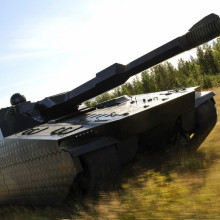
10:38 - Thermal camouflage
Thermal camouflage
Anything which is warm will glow, if it is very hot it will glow in visible light , but even at body temperature you are glowing with invisible infra red light. If you have ever watched a police show, you have probably seen footage from thermal cameras, which detect this light.
This glow isn't only a problem for criminals, but also for the military as a beautifully camouflaged tank in conventional light will still look just like a tank in the thermal infra-red.
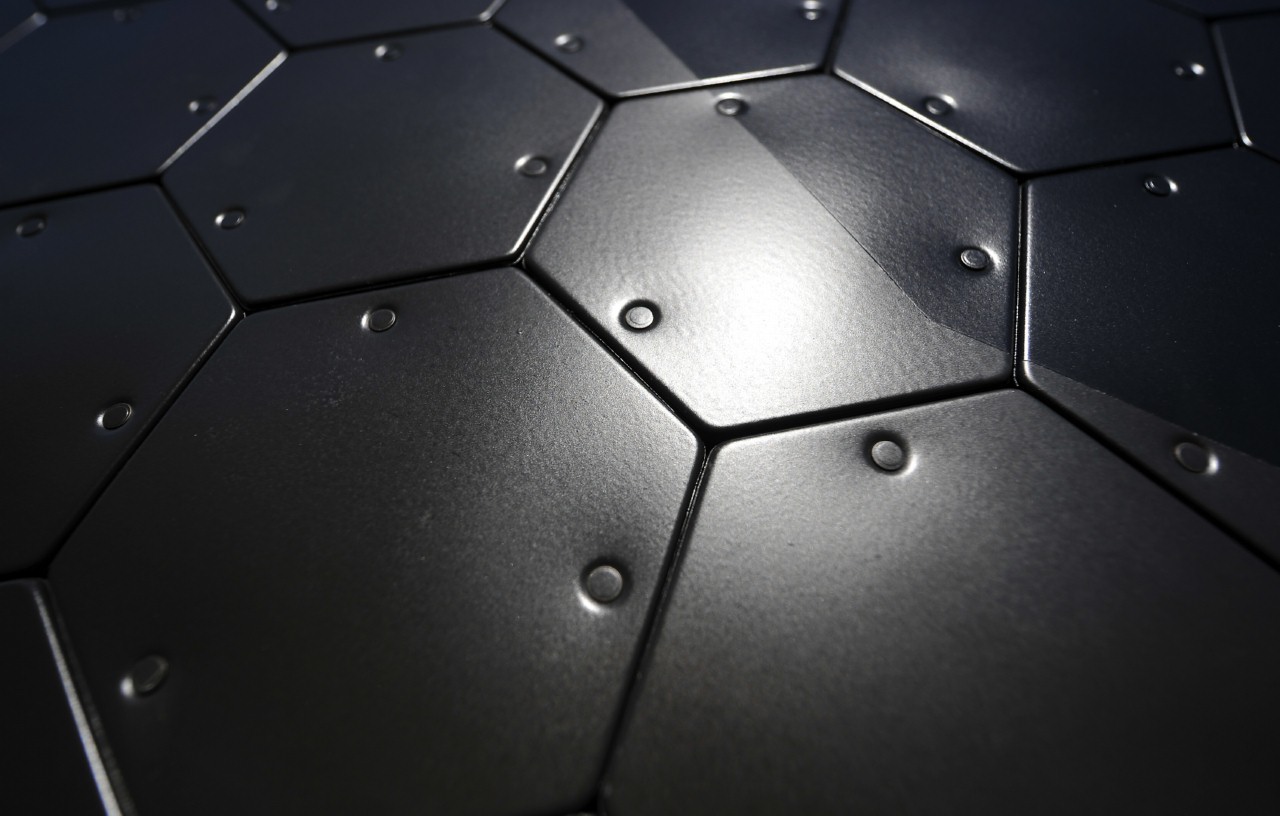 A part of BAE systems based in Sweden has developed a new form of camouflage which might help. It does this by covering your tank with lots of electrical heat pumps which I assume pump heat from or to the air which is transparent, so doesn't glow when hot. These pixels can heat or cool the surface of the tank very rapidly, and the temperature of each of the pumps can be indivdually be set so they work like pixels.
A part of BAE systems based in Sweden has developed a new form of camouflage which might help. It does this by covering your tank with lots of electrical heat pumps which I assume pump heat from or to the air which is transparent, so doesn't glow when hot. These pixels can heat or cool the surface of the tank very rapidly, and the temperature of each of the pumps can be indivdually be set so they work like pixels.
This means that the pixels can be set to mimic the temperature and pattern of the landscape behind the tank, or as this will never be perfect, it can be set to make a tank pretend to be a car or any other object.
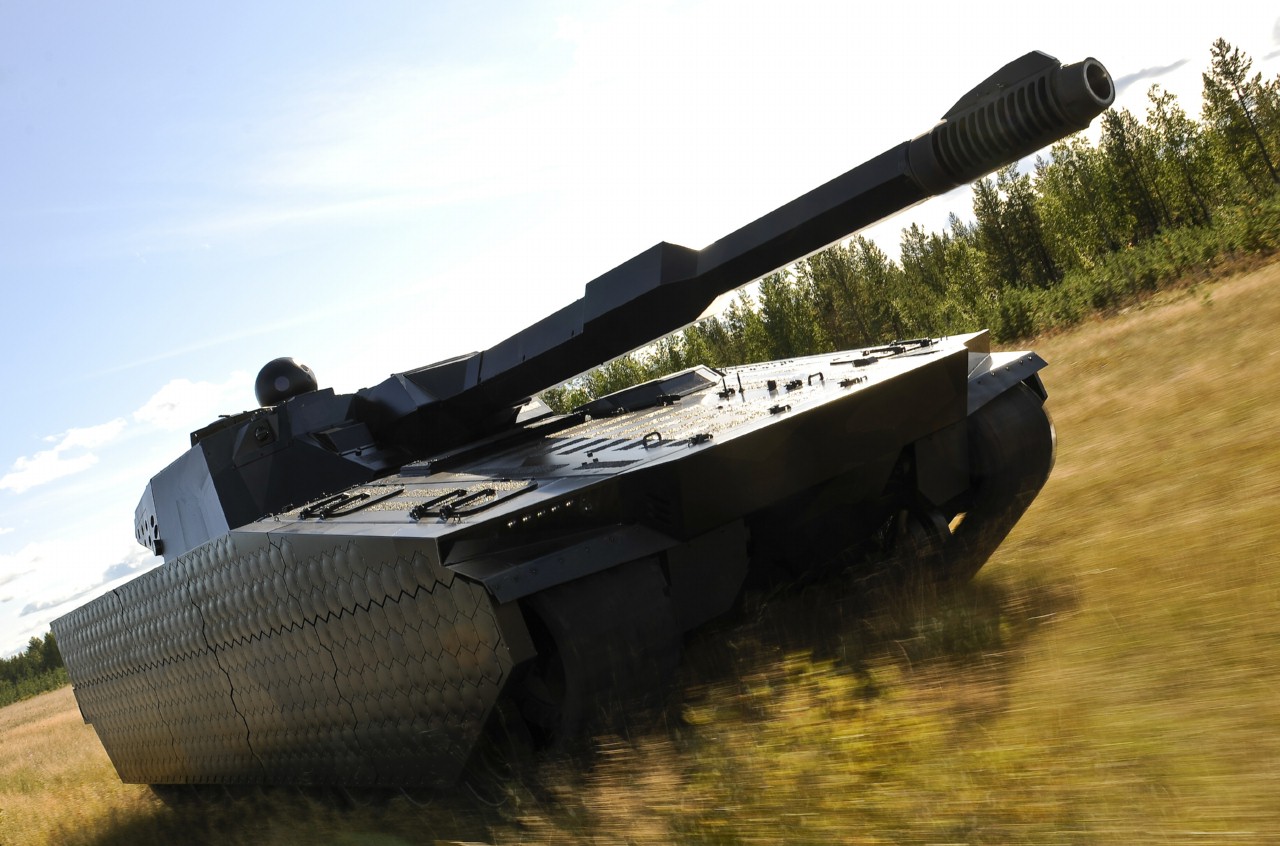 They also can make the pixels much larger for something like a ship when there is no point trying to make it invisible close to, and apparently the system is fairly robust, and actually add to the armour of the vehicle.
They also can make the pixels much larger for something like a ship when there is no point trying to make it invisible close to, and apparently the system is fairly robust, and actually add to the armour of the vehicle.
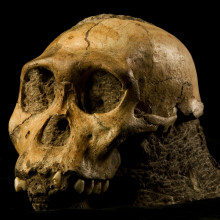
12:33 - The last Australopith?
The last Australopith?
Splashing all over the science news this week is a host of revelations about Australopithecus sediba. This particular early human has been in an out of our shows since 2010, when Professor Lee Berger from the University of the Witswatersrand first published his discovery. What's important about these fossils is that, at almost two million years old, they are amazingly preserved, and they demonstrate characteristics of both australopthecines and the species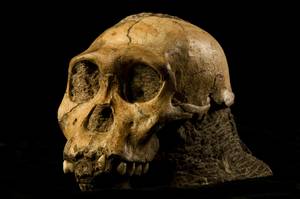 Homo. Australopithecines are those early humans that had small brains, but could walk about some of the time on two legs - whereas Homo tends to have a larger brain and walk almost exclusively on two legs.
Homo. Australopithecines are those early humans that had small brains, but could walk about some of the time on two legs - whereas Homo tends to have a larger brain and walk almost exclusively on two legs.
Publishing in the journal Science, it's been demonstrated that sediba has some of the features of both groups. There are other findings that put sediba somewhere in between the australopiths and homo: it had arched feet but quite ape-like heels and calves, it had cusped teeth which were large - but not as large as the usual australopith.
There are also differences from the earlier australopithecines in the shape of sediba's pelvis. The flat, flaring sections known as the Iliac blades are quite thick and vertically orientated, as you see in modern humans. But there aren't any indications that these changes were actually associated with having bigger-brained babies. So what the authors very cautiously posit is that sediba's hips were becoming more Homo-like through walking much more like Homo - and that bigger brains weren't required to drive certain changes in the pelvis.
Plus, this fossil may provide some much-sought answers about that mysterious early hominin from southeast Asia - Homo floresiensis (the hobbit).And you can hear more of that in a special half-hour interview with Professor Lee Berger on our website at thenakedscientists.com.
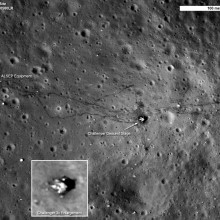
16:52 - Social weight Loss, Youthful plants and Moon Landings
Social weight Loss, Youthful plants and Moon Landings
with Matthew During, Ohio state University, Iza Radeska, University of Wolverhampton, Johan Erlean, Stockholm University, Mark Robinson, NASA
Losing Weight the Social Way
Having an active social life could help with fat loss.
There are two forms of fat in the body - energy storing 'white' fat and energy burning 'brown fat'. Matthew During and colleagues at Ohio State University found that exposing mice to a challenging, socially-interactive environment with more mice, more space and toys resulted in a much leaner population.
"So when we looked at these animals and looked at fat, it was remarkably reduced. This total fat was reduced by that 50% to 70%. Fat changed from white fat to brown fat, making it resistant to obesity and giving it much greater long term health as well." Matthew During
Read more:
White to Brown Fat Phenotypic Switch Induced by Genetic and Environmental Activation of a Hypothalamic-Adipocyte Axis; Lei Cao, Eugene Y. Choi, Xianglan Liu, Adam Martin, Chuansong Wang, Xiaohua Xu, Matthew J. During; Cell Metabolism - 7 September 2011 (Vol. 14, Issue 3, pp. 324-338) DOI: 10.1016/j.cmet.2011.06.020
---
Protecting Probiotics
A new biopolymer could increase the effectiveness of probiotic friendly bacteria.
Until now, the main challenge facing probiotic manufacturers has been getting enough bacteria to survive the acidic conditions of the stomach.
But now, Iza Radecka's team from the University of Wolverhampton have developed a polymer to act as protective coating.
The increased survival time will allow greater numbers of bacteria make it through to the gut, to do their work.
"It's a bacterial polymer, it's water soluble, biodegradable, and edible. We, for example [put] uncoated and coated bacteria into simulated gastric juice. The ones which are not coated, after two hours there were none left but the ones which were coated with our polymer survived, intact, nearly 100%." Iza Radecka
Read more: New polymer research could boost probiotics industry -
Wolverhampton University Press release; This work was presented at the Society for General Microbiology's
Autumn conference in York, 5-7 September 2011
---
The Plant that doesn't get Old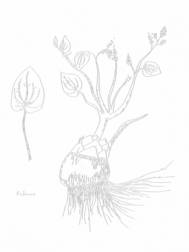
A herb found deep in the mountains of the Pyrenees can live for up to 300 years without showing any signs of ageing.
Johan Ehrlén from Stockholm University and colleagues studied 260 year old samples of the plant Borderea pyrenaica, to get further insight into the role and importance of ageing.
"We could find no evidence of decreased performance with age. No evidence of senescence. Growth and reproduction were constant over age and survival tended to increase with age. So actually, performance improved with age. The important finding is that there is a lot of theoretical arguments. If every organism has to senesce or whether selection can actually favour lack of senescence, and looking in different organs will sort out why senescence sometimes is important and why it's sometimes seems to be absent." Johan Ehrlén
Read more:
Garcia, Maria B; Dahlgren, Johan P; Ehrlén, Johan; No evidence of senescence in a 300-year-old mountain herb; Journal of Ecology; (2011); DOI: 10.1111/j.1365-2745.2011.01871.x
---
Personalised 3D Headsets
Sony have launched a personal 3D viewing headset as part of its increasing 3D technology range.

The headset was launched at the IFA 2011 consumer electronic show in Berlin this week with the head mounted display intended to give an immersive 3D experience.
The futuristic headset complete with headphones, uses two high definition screens which feed separate video to a viewers eyes to create a 3D illusion. But the gadget doesn't come cheap, with a current retail price of $785 dollars.
Read more:
"Pure immersion: the movie theatre that's just for you" - Sony press release
---
NASA Moon Landings
And finally, NASA have released high resolution images of the Apollo moon landings.
NASA's Lunar Reconaissance Orbitor captured the sharpest images ever taken of the Apollo 12, 14 and 17 landing.
Using low altitude narrow angle cameras, the images clearly show the movement of astronauts on the moons surface as well as the lunar rover, as NASA's Mark Robinson explained as he looks over the Apollo 17 landing.
"You can see very clearly both the astronaut tracks and the beautiful sharp and crisp parallel lines which are the tracks of the lunar roving vehicle. It's pretty neat, because you know what the RV looks like, if you squint really hard, you can begin to resolve the seats and the fact that the wheels are left turned slightly to the left." Mark Robinson
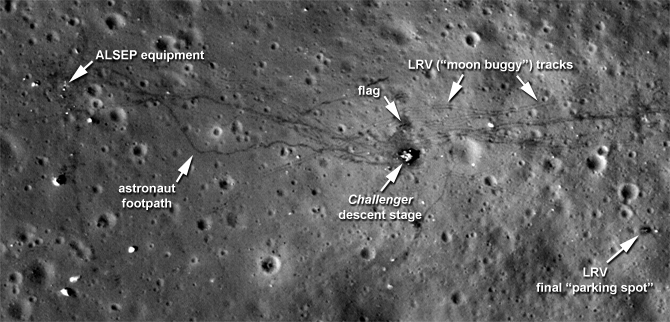 | 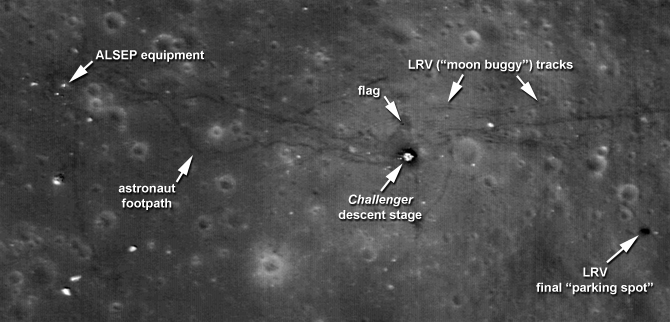 |
| You can view more images of the moon landings here. |

20:59 - Attracting Bees with Wild Flowers - Planet Earth Online
Attracting Bees with Wild Flowers - Planet Earth Online
with Robin Blake, University of Reading & Mark Robbins
Dave - Over the last few years there have been various government schemes here in the UK to pay farmers to live grass strips around the edges of fields of crops. The idea is to encourage wildlife but research suggests they might be better off planting wild flowers. The research by Robin Blake from the University of Reading showed that by encouraging flowers, farmers would also encourage bumble bees which are also currently declining in numbers. Planet Earth podcast presenter Richard Hollingham joined Robin in a field near Reading in Berkshire to see how this experiment worked.
Robin - Grassy strips are really common and while they offer some biodiversity benefits, for example for ground nesting birds or predatory invertebrates such as spiders and beetles, because there aren't any wild flowers present, there's nothing there to attract insect pollinators.
Richard - So what did you do then?
 Robin - Our project is looking at two different management treatments. So we're adding wild flowers and we're also applying a graminicide. That's a grass herbicide, it has the aim of suppressing the grasses and really giving the wild flowers a chance of becoming established in the strips.
Robin - Our project is looking at two different management treatments. So we're adding wild flowers and we're also applying a graminicide. That's a grass herbicide, it has the aim of suppressing the grasses and really giving the wild flowers a chance of becoming established in the strips.
Richard - Let's look then at this strip here. We've got wild flowers in front of us, rather obvious wild flowers, you'll have to identify these for me. Okay, what have we got here?
Robin - So we've got an oxide daisy here, which is in flower...This is knapweed, we've got yarrow, ladies bedstraw, ribwort plantain. There's birdsfoot trefoil here, the yellow flower.
Richard - And yet further down this strip it's just grass.
Robin - And that's representative of many of the grass margins in the UK.
Richard - So you've got the wild flowers, have you got the bumblebees?
Robin - Yeah. We have. In the plots that have received the wild flowers and the graminicide, we can see a 25-fold increase in bumblebee numbers compared to the existing grass strips. Not just of bumblebees but of solitary bees, honey bees, butterflies as well.
Richard - So this proves it works?
Robin - It does, yes.
Richard - Okay. Well let's talk to a farmer then, Mark Robbins who runs the estate here. Great isn't it?
Mark - It looks absolutely fabulous and I'm very proud to have them on our stewardship margins really. We put these margins down in 2003 and the mixtures are what we were asked to put down by Natural England, the prescriptions that I put down when I was farming back in 1996 and they are just grass. I always thought that they were environmentally very dull. So when Robin came along and said he'd like to try something out, I grasped the opportunity because I wanted to see whether we were proven right or not and it appears that we have been.
Richard - Is there a difference though and a difference in effort, a difference in money involved in this? If you just left this strip you would end up with grass, but you have to actively spray it with something to suppress the grass if you want the nice wild flowers.
Mark - You're absolutely right on one level, but what you've got to remember is before these strips were put in in 2003, there was a crop right up to the hedge. So we had to actively plant the grass and we had to actively keep the docks and the nettles and the thistles out. So on one level yes, you're right. But on another level if you're going to plant a new stewardship strip around the edge of a field, you might as well plant it with something that's going to provide some sort of benefit, which is what we appear to have seen here. It does rely on a subsidy but where I was coming from in putting these things in is that if we can provide some sort of environmental benefit for that subsidy then one feels that one is doing one's bit. Where we are now with these sorts of mixtures and margins, actually you are providing a real benefit and not just grass strips that don't really do a great deal.
Richard - You also notice bees coming there?
Mark - Very much so. Whilst you were interviewing Robin just then, if you look at the detail of it, you can actually see activity there. If we were to go and stand up on the rest of the grass strip, I'm pretty sure you wouldn't see a great deal. Going back to the pollinators and things, we've got the spring linseed that's now come out into flower here. What better example of the fact that we need, as agriculture, as consumers of food, we need these pollinators to make sure that the crops in the field are pollinated. And here we are, we've got a crop of linseed on the one side and we've got insect activity encouraging the bumblebees and the nectar bees into this strip. So it seems to work.
Richard - Robin, this is a great example, it strikes me, of science applied to the real world which is the crop growing on the right of me.
Robin - Yeah. Absolutely and I think it's just as important to see how these habitats in the margins can be used to help the crops, you know, because obviously bees are important in the pollination of crops such as linseed.
Richard - This is the research. Where do you go from here because you need other farmers onboard really...
Robin - The research that I've done, I've focused just on four farms in southern England. And whilst we've replicated those results across those four farms, if I'm going to make the policymakers listen, then I think we need more data on, a range of farms across the UK. But more importantly we need to get the farmers to do the treatments for themselves and really show the benefits can work.
Dave - That was Robin Blake from the University of Reading along with farmer Mark Robbins talking to Planet Earth presenter Richard Hollingham in a field somewhere in darkest Berkshire.
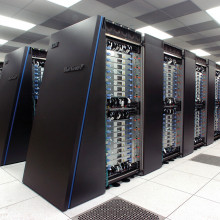
26:12 - How do Supercomputers Work?
How do Supercomputers Work?
with Chris Maynard, Edinburgh Parallel Computing Centre
Diana - Supercomputers are, as the name suggests, extremely powerful computing devices. They are used to model extremely complicated systems such as the weather as well as for high precision simulations and complex calculations required in quantum physics. So that might be molecular modelling, it might even be predicting revolutions and many, many more things. The Edinburgh Parallel Computing Centre or EPCC provides computing resources to Edinburgh University and to industry. And we're joined by Dr. Chris Maynard. Hello.
Chris M. - Hello.
Diana - So can you tell us, what is a supercomputer?
Chris M. - A supercomputer is a computer that can perform calculations very quickly, much faster than a normal computer would. Typically, this is done by computing in parallel, having lots of processing units or nodes working together. Each of these nodes could be a computer one finds in a desktop PC or a laptop, but how they're connected together in hardware and how they cooperate to solve the problem is very important to the speed of the calculation.
Diana - What is this structure then? How big are these things going to be and what is their power consumption and the speed of the individual parts that go into it?
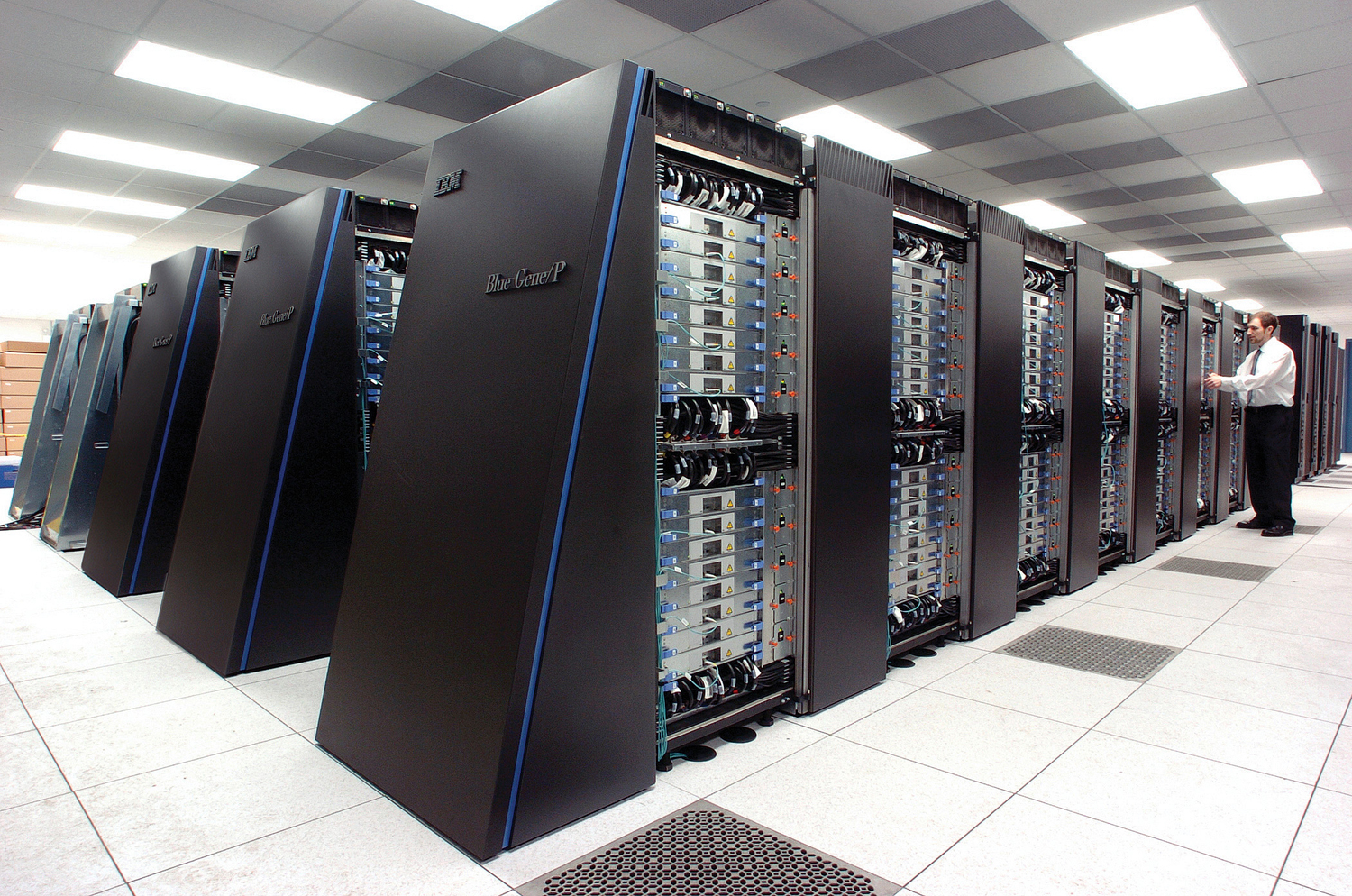 Chris M. - So, for instance we run HECToR which is the UK's National High Performance Computing Service along with other partners and this is funded by the Office of Science and Technology through the EPSRC's high end computing program. This particular machine is called HECToR and it's a Cray XE6. It has 1,856 nodes in it and each of these nodes is a 12-core Opteron processor so that gives you a total of 44,544 cores. Each of these Opterons is coupled with a Cray Gemini routing and communication chip. So in total, it has a very large memory, about 60 terabytes and its theoretical peak performance is 360 teraflops which is 360 trillion computations per second, and is the fastest computer in the UK, and the 24th fastest in the world.
Chris M. - So, for instance we run HECToR which is the UK's National High Performance Computing Service along with other partners and this is funded by the Office of Science and Technology through the EPSRC's high end computing program. This particular machine is called HECToR and it's a Cray XE6. It has 1,856 nodes in it and each of these nodes is a 12-core Opteron processor so that gives you a total of 44,544 cores. Each of these Opterons is coupled with a Cray Gemini routing and communication chip. So in total, it has a very large memory, about 60 terabytes and its theoretical peak performance is 360 teraflops which is 360 trillion computations per second, and is the fastest computer in the UK, and the 24th fastest in the world.
Diana - Okay, so those are really sky high numbers then. I mean, that's going to throw my poor little ancient laptop into the shade, but once you've got this hardware, what is the software that goes on top of that? How does it work compared to a normal program that you'd have on an everyday computer?
Chris M. - The bit that makes a supercomputer super is how these computing nodes are coupled together. So you have some hardware that does it but you have to then write some software that will enable them to talk to each other. Typically, for science programming, what you might have is a model of message passing. So we would split the problem up across many processors so that each processor has a small amount of data that's local to it and then each processor runs the same calculation on this local data, but at some point during the calculation, and quite regularly during the calculation, the processors have to talk to each other and they have to communicate with each other. So, you would send a message to your neighbour and there's a communication grid and they would speak to each other by - you would send some data to your neighbour on the right and you'll receive it from your neighbour on the left, and then you might do that in many dimensions; up, down, left, right, back and forth, depending on the problem.
Diana - Okay, so given you've got this communication type software, does that mean then that you develop that rather than rebuilding a new supercomputer each time because obviously, the expense of that must be huge?
Chris M. - Yes, absolutely. So you're trying to have this programming model that you would use so that all these processors can talk to each other and you'd write a scientific program in a language you would normally use like C or Fortran and then if you're going to use this message passing model, there's a communications library called MPI which you can then use on more than one machine.
Diana - And supercomputers, are they advancing at the same rate that normal computers are?
Chris M. - Well that's a very interesting question because they are and there's something called Moores Law which is an empirical observation that the number of transistors in an area of silicon has doubled every 18 months or so. And this has been true since the '60s and if you have a smaller circuit, your computer can run faster, but it also runs hotter. And since perhaps the middle of this decade, 2005 or so, it's been no longer possible to get sufficient power into and out of a chip fast enough and so it gets too hot. So you can't run it as one computer chip anymore, but what you can do is run them as two chips or four chips, or many more chips so you're getting more cores on one piece of silicon on one chip. But now, if you're having many of these nodes together that are then multi-core, you've now got even more complicated communication patterns between things that can see the same piece of memory on one chip and things that can't that then have to communicate to send a message between the chips.
Diana - So really, it's like building a brain essentially with lots of neurons. But what sort of science are you doing in Edinburgh? What are the models that you're building with your supercomputer?
Chris M. - Well let me give you an example - so last week, you talked about scientists modelling their response of the heart to drugs. At EPCC, we've done some work with some scientists from Kings College in Oxford to improve the performance of their computational model of the electrophysiology of the heart so it can now run on many more processors or cores than it could previously up to now say, 16,000 and this means they can do 1-second simulations of the heart which would take them under a minute rather than say, more than one hour previously. And this is a great improvement and it goes much faster, but if you want to use this model to say, guide surgery then you need to be able to do it in real time.
Diana - I see. So this could really help medicine as well and help surgeons while they're working.
Chris M. - Absolutely. Another example might be if you look into the night sky tonight, just beyond the plough, you can see a supernova that's exploded and if you want to try and understand how a supernova works, you might try and run a calculation on a supercomputer.
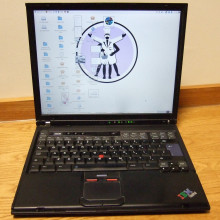
32:28 - What are Supercomputers used for?
What are Supercomputers used for?
with Paul Calleja, University of Cambridge
Dave - The Cambridge University high performance computing resource, or HPC, provides computing facilities to researchers at the university. Paul Calleja, Director of the HPC showed me around their computer system called Darwin...
Paul - What you're looking at is a rack of commodity X86 servers, so we have 32 servers in a rack and each rack in total contains 128 processors which you might find in your desktop machine at home.Dave - So I'm guessing with a supercomputer the important thing to do is somehow to connect these altogether. There appears to be some - what look like standard network cables and there are some other connectors which I don't actually recognise...
Paul - We have standard ethernet networks for our data and our administration and then a specialist network called Infiniband for our parallel processing. So the Infiniband network is particularly high bandwidth and low latency so the time it takes to get a message from one server to the other is very low and the amount of data we can send is very high.
Dave - So this is very important if you've got computers on different sides of the room which if they work on the same problem, they might want to communicate and doing that as quickly as possible is very important.
Paul - Yes. So in total, we have over 800 servers in this one room. Housed in those servers is approximately 4,000 CPU cores and all servers can talk to all servers at once with a bandwidth of about 3 Gigabytes per second.
Dave - So what's the advantage of using large amounts of essentially standard hardware over something a lot more proprietary?
Paul - The standardisation has led to a dramatic decrease in price, so the price point has dropped to 100 fold and also, the rates of the advance of the commodity market is very high. So we get a double in their performance every two years which is given to us for nothing from the general advances in the computer industry.
Dave - And to explain more about Darwin, Paul joins us here in the studio. Hi, Paul.
Paul - Hi, Dave.
Dave - So how does Darwin differ from HECToR,
which we were talking about earlier, in Edinburgh?
Paul - Both Darwin and HECToR are best in class, tightly coupled supercomputers which means they're designed for the maximum performance in how messages are sent around the machine. In that respect, they're the same. Darwin differs from HECToR in that Darwin is a commodity machine made from standard off-the-shelf components whereas HECToR is a proprietary machine. The processors in both machines actually are commodity but Darwin has a commodity interconnect whereas HECToR has a proprietary interconnect. So that interconnect which has been spoken about that makes a supercomputer super is open in Darwin and basically, we own all the technology and how it's put together whereas in HECToR, your vendor owns the technology.
Dave - So I guess this is an advantage. It means you get some more flexibility and it's cheaper because if anyone can build the kit, it's going to be a lot cheaper then.
Paul - Yeah, the more of value add that you own yourself, the less value add the vendor can charge you for, so you can drive price points down and also, the rate of advancement is quicker and so, this has led to a great improvement in supercomputing over the years.
Dave - So what are you actually doing here in Cambridge with your supercomputer?
Paul - So Cambridge is primarily used for research in the University of Cambridge and we have over 400 users on the machine from 65 research groups. Those guys have generated around 300 publications in the last 4 years, and they're very active doing all kinds of science. I can tell you about some of that.
Dave - So essentially, they decided they wanted to do something, they then write some code and send it to you and run it?
Paul - Yeah, there's a range of activity. So for example, a recent new activity on the machine is the UKQCD consortium. So this is a consortium of researchers from UK; Glasgow and elsewhere, and they're doing very complicated calculations looking at the nature of matter. They're looking at the strong interactions known as quantum chromodynamics, comparing that calculation to experimental data that they get from the LHC experiment in CERN. And this is very common so your scientist has a theory, he has calculations to try to substantiate that theory, and then he compares it to experiments. These calculations can be very large.
 Dave - So quantum chromodynamics in the strong force of the forces which hold the nucleus of an atom together of things.
Dave - So quantum chromodynamics in the strong force of the forces which hold the nucleus of an atom together of things.
Paul - Yes, exactly.
Dave - I've heard that actually calculating them has been almost impossible for a long time.
Paul - Yeah, the grid cells that you're talking about are million, million points in your matrix that you have to calculate and they need to calculate that over and over again, and then they get expressions of atomic mass which they can compare very accurately. If the two numbers coincide, you know that your theory is correct. And so, this is what simulation is used for in many different areas.
Dave - So what else are you up to?
Paul - So other things we're looking at, we have a collaboration with the hospital, Addenbrookes, where they have a gene sequencing facility in the hospital and they have lots of these next-generation gene sequencing machines to look at your gene sequence for particular disease cases. They generate all the data up there at the hospital and send them over a 10Gb Ethernet link to our machine in the centre of town, we process the data, and then send them back the answers.
Dave - So they're attempting to compare lots of different genomes and find out which bits of the genomes are associated with the different diseases?
Paul - Yeah. In the clinic now, it's quite common that you may well be genotyped for particular diseases and you need those answers back quickly. They don't have the facility of doing the calculations at the hospital and we do, so we've partnered with them for doing that. So that's quite an interesting one.
Another interesting project just recently is the Planck satellite. So the astronomy department in Cambridge are collecting lots of data from the satellite called Planck on the Cosmic Microwave Background Radiation. That's an awful lot of data and that gives you information about the early universe. So again, we get sent those data, we calculate it with lots of Monte Carlo simulations and then send them back the results.
Dave - So everything you've suggested at the moment has involved large amounts of data and difficulties handling it, that sort of thing?
Paul - Yeah, well this is often spoke about recently in terms of the "data deluge". The data was increasing incredibly fast - the quantum chromodynamics guys filled up a hundred terabytes of discs in about 4 months. That was meant to last them three years! So we now have around 600 terabytes of data. Next year, we'll have a petabyte, a petabyte is a thousand terabytes, and it's just exponentially growing. In fact data requirements are growing five times faster than our computer requirements.
Dave - So that's going to a big challenge in the future.
Paul - Yeah. The major challenge at the moment is how you architect your system to allow all that data to flow from the computer to the data and then once the data has flowed there, what do you do with it, how do you store it, how do you analyse it, how do you keep it?
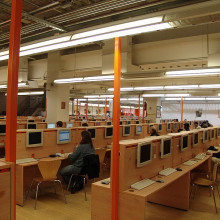
40:25 - The World Community Grid
The World Community Grid
with Joe Jasinski, IBM Research
The World Community Gridis a project to create the world's largest public computing network to help power scientific research and specifically, research that benefits human kind. So work designing drugs or finding cures or treatments for disease. The grid was launched in 2004 and it's operated by IBM. To find out more about the project, Chris Smith spoke to Joe Jasinski, Director of Healthcare and Life Sciences Research at the company....
Joe - The World Community Grid is a group of researchers and a group of ordinary citizens who have combined their efforts to build what is in fact in some sense, one of the world's largest supercomputers to solve problems that we believe are beneficial to mankind. And so, what the grid is, anybody can join. It's using your own PC or computers that you own to join a network of computers and those computers are used by the scientists who are doing projects with the World Community Grid to do computations that will otherwise be impossible for them to do because they don't have enough computing power.
So the way it works is you go to worldcommunitygrid.org and you can sign up your machine or machines and we download a screensaver to your machine, and when you're not using your computer, which is most of the time actually even if you had it on and you're sitting in front of it, we can do some computations that ultimately when they're done, we send the results back to a centralised computer which we call the head node.
After we've done enough of these computations, we present the data to the principal investigators, the scientists who are exploring things on the World Community Grid, and they can then understand their problem and hopefully discover something new like a new drug to treat HIV/AIDS or for dengue fever, or maybe finding new kinds of plastic materials that would make cheap solar shells available.
Chris - Sounds terrific. How many computers or how many users you have signed up actually contributing to this initiative?
Joe - So we have just over half a million members which could be individuals or could be institutions like schools or universities, and we have a total of about 1.8 million computers that are signed up by those members. So the grid itself consists of about 1.8 million nodes, as we would call them or individual processors, that can be applied to these problems.
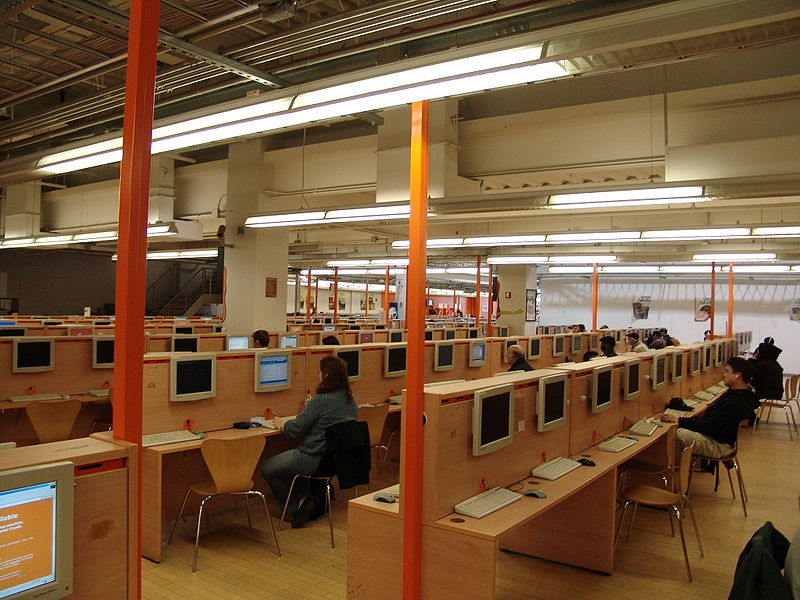 Chris - So, on aggregate, how much computing time are you actually able to harness with the grid at any one moment?
Chris - So, on aggregate, how much computing time are you actually able to harness with the grid at any one moment?
Joe - The problems run in background on your computer so it's only using background cycles, but if you assume a reasonable PC or other kind of machine, then we're certainly in the teraflop range. So trillions of floating point operations per second or more.
Chris - So does that make it probably one of the most powerful computing resources the planet currently has?
Joe - It is one of the most powerful computers on the planet currently but it's only good at doing certain kinds of problems that are what are called embarrassingly parallel. The entire problem has to run on each machine as opposed to a more traditional scientific supercomputer where one problem runs across thousands and thousands of processors on the same machine.
Chris - In other words, there are certain problems which can be broken up into lots of little chunks and work very nicely in a parallel way, the way that you're doing it, but there are some problems that are actually a bit like a game of chess where if you do this, then this has to happen and then that needs to happen, and there are sequential problems which a supercomputer would be better at than your system.
Joe - Yeah, that's the basic idea. We don't actually break the problem up into chunks. The kinds of experiments that we do are say, you want to test a bunch of different kinds of compounds that might be good drugs for fighting AIDS; suppose you have a thousand drug compounds that you want to test and you have a dozen proteins that you want to see if those drugs would stick to. You need to do a bunch of calculations each time to figure out whether that's true or not.
So suppose you had to do a very simple calculation which was: Does this molecule stick to this protein? But in order to get the entire answer, you wanted to have to do that calculation a million times. If you only had one computer and you had to do 1 million of those calculations and suppose the calculation only took a second, it would in fact take you about in excess of 10,000 years on your one computer to get all the computations done.
On the other hand, if I had a million computers and I could run one individual computation on each of those million computers at the same time, it would take on the order of a second which is what the World Community Grid does. It's not quite that fast, but instead of doing it in years, or months or thousands of years, we can do it in minutes or hours.
Chris - So how does your project differ from say, the SETI@Home project or the initiative Fold it where people are trying to work out structures of proteins by downloading a screensaver and analysing a bit of a protein for example?
Joe - From a technology perspective, it's the same kind of technology. The distinction with the World Community Grid is it's a not for profit organisation and we don't focus on one particular problem. So SETI@Home focuses on analysing signals from space, Fold it focuses on analysing protein folding and they're controlled by a single individual or single project.
 The world community grid works by soliciting projects from investigators at universities or other not for profit organisations and if we believe that your computation can run effectively on the grid, and if we believe that the results of your project might in fact be beneficial to mankind, like we could discover a new drug for a forgotten disease or a new material that would help the environment, then we grant you time on the grid and you get to run for as long as it takes to finish your project. So IBM actually provides what's called the 'head node' - the machine that controls all the other machines and we basically make it very easy for the principal investigator to get their problem onto the grid and then get their data back off the grid.
The world community grid works by soliciting projects from investigators at universities or other not for profit organisations and if we believe that your computation can run effectively on the grid, and if we believe that the results of your project might in fact be beneficial to mankind, like we could discover a new drug for a forgotten disease or a new material that would help the environment, then we grant you time on the grid and you get to run for as long as it takes to finish your project. So IBM actually provides what's called the 'head node' - the machine that controls all the other machines and we basically make it very easy for the principal investigator to get their problem onto the grid and then get their data back off the grid.
Chris - So how many big projects are you looking at at any one time or considering and what's the waiting list to get onto the grid?
Joe - Currently, we have 9 projects active and they're active at different phases. The waiting list is actually pretty short. So if any of the listeners out there are actually faculty or associated with research institutions, they're doing not for profit work, and you're interested in applying for time on the grid... There are two kinds of people in this project - there are the scientists who apply for time on the grid to see if they can solve their problem and then there's anybody - scientists, any ordinary people who want to contribute their computing time - so basically, you can be either or both.
Chris - And you were going to say, if there's anyone out there who wants to get involved, what should they actually do? Who do you send your begging letter to?
Joe - So you just go to
worldcommunitygrid.organd if you're a PI, there's a section on the web page that tells you how to apply for time. If you want to donate time from your computer, there's a section that tells you how to download the screensaver. You can form teams. We have some institutions that form teams. You could score points based on how many computations your team does. You don't get any prizes for doing that but people get very interested in it and the other thing you get to do if you're a contributor of time is we have very nice write-ups of all these projects. They're written in very simple terms so that almost anybody can understand them about what the scientist is trying to accomplish and how it works. And if you want, you can pick of these projects for you machine to work on.
Chris - And let's finish by hearing some of the success stories so far. So what projects have you brought to fruition? What have been the outcomes?
Joe - The outcomes of most of these projects initially are publications in the scientific literature. In our "Fight AIDS at home" project, we have the used the World Community Grid to discover, potentially, new kinds of AIDS drugs. It will take many, many years of course to test whether those new compounds are in fact are useful for treating AIDS, but that's true of any kind of drug discovery process.
We've also done some work with an investigator who's interested in finding cheap plastic materials to make cheap solar shells. And again, using the World Community Grid to do a number of computations that were too big for the kind of computer he had available to him. He's been able to test and discover some potentially exciting new materials.
How do supercomputers compare to normal computers?
Paul - Well firstly, I would say it's a matter of scale So a normal computer would have one processor, a supercomputer would have the same processor but maybe 100,000 of them. So the processors are the same but scale is different and then the interconnect is completely different in a supercomputer so that you can pass lots of data quickly. Dave - So, just getting lots of normal computers and connecting them together with network cables wouldn't necessarily make it a supercomputer. Paul - Not unless you had a specialist network and then of course, there are many software layers on top of that which it will require and then the applications from where the real magic comes in.
Can science develop a supercomputer that will keep my laptop from crashing?
Chris M. - In principle, when people design chips, they do use a simulator in a computer to understand how that chip is going to work and the other thing you might notice is when your laptop crashes, you get a little pop-up message saying, "Can you send the crash information to Microsoft" - for instance if you're running a Microsoft operating system. The reason they're doing that is they're trying to collect data and information about why the laptop or computer has crashed so they can make a model or mathematical model. Now if you had a mathematical model, you could then run that on a supercomputer and try and predict, and figure out why your laptop had crashed. So the answer is, yes.
What is the energy cost of keeping a computer cool?
Paul - It all depends on the air-conditioning system you've got, but in Cambridge, our power costs are 25% of our total running costs which in this case is about Ã?,£250,000 a year. The cooling is 1/3 of that power, so around Ã?,£80,000 pounds a year just to keep it cool. Dave - I guess if you're just dealing with an individual laptop, then their cooling is going to be far, far less than that [as a proportion] because it's just running a small fan. Paul - In a laptop, you can just cool passively to air whilst we have to actively take the heat away.
With no humans, how long would automated systems run?
Paul - Well actually, we ran our previous supercomputer, which was a Sun, for probably about 3 months without human intervention. (I won't go into why that was!) Our current machine would probably run for a couple of weeks.
Why are electric sparks blue?
Dave - An electric spark is essentially electricity flowing through a gas and in doing that, it has to rip the electrons off the gas. Sometimes those electrons recombine with the atoms, at which point they release lots of energy in the form of light. Different gases release different colours of light. So argon produces a purply colour, helium often a reddy colour, sodium as a gas that produces a really bright orange colour, which you see from sodium street lights, and nitrogen, which makes up most of the air, glows with a blue colour. So, a spark essentially nitrogen glowing. Diana - Right, so if you set off a spark on Venus, you'd probably get quite a different colour. Dave - Yes. Venus's atmosphere is mostly carbon dioxide and I think carbon dioxide certainly can glow with a kind of yellowy greeny colour.
Could we harvest metals from the Earth's core?
Dave - It does seem like a nice idea, especially because of all that gold which is apparently down there. I think practically, the answer is no. It's an awfully long way down to the Earth's core and building a tunnel down there, even if you could be bothered to dig the tunnel for 2,000 kilometres or whatever it is, you would then have to support the sides of it. The pressures down there are absolutely immense and ridiculously high even if you ignore the fact that it's about 6,000 degrees centigrade. It's just not going to be practical. It would be far easier to go up and find some asteroids for the gold in them up in space.
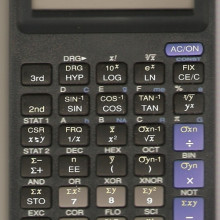
52:45 - How does a calculator work?
How does a calculator work?
We posed this question to maths teacher Jeffrey Zilahee from mathgurus.info...
Jeffrey - We all know that calculators are these fast little machines that can do calculations in incredible speed and have served to make humanity more computationally exact species, but exactly, how do they work? Well, whether you're talking about a scientific, financial graphing, or even a calculator on your phone, they all work in a similar fashion. In a nutshell, calculators just like their big brother, the computer, work by understanding everything in terms of two states. We call this binary and specifically, those two states are given as either a zero or a one. So, when we press buttons on a calculator, those buttons are connected to sensors that send electrical currents to the integrated circuitry of a calculator. This circuitry contains transistors that build up a logical framework for solving any given calculation, and the more transistors present, the more advance the functionality of the calculator is likely to be. Transistors use electricity to be in an on-state indicated by a one and off, indicated by a zero. So when a calculator wants to add two numbers it first converts those numbers into binary. For example, a four would be represented as 1-0-0 and a two would be represented as 1-0. From there, the process of addition is dictated by each column either summingto 0, 1, or two 1s, in which case a one would go into the next column since calculators cannot comprehend a 2. Once the calculator has the answer since it is in binary, it turns on a series of lines and/or pixels to create the visual match of the number that we understand which is decimal or as mathematicians call it - base 10. Part of the reason why calculators are so quick is because at their core, they're relying on electrical impulses which travel at the speed of light.
Diana - So, calculators, much like computers, translate everything into binary or base 2 because it allows numbers to be translated into electrical signals that are either on '1' or off '0.' To display an answer, it then sends this information to its LCD screen and as those of you with any sort of LCD TV monitor or clock may know that these displays work by placing a voltage across a layer of molecules which are layered between filters and the changing voltage will make these liquid crystals appear opaque or transparent.
- Previous The Bling from Outer Space
- Next Science of whaling










Comments
Add a comment